Cat Years to Human Years: Calculator + Chart
Ever wondered how old your cat is in human years? Understanding your feline friend’s age in human terms helps you better care for them at each stage of their life. Use our simple Cat Years to Human Years calculator and detailed chart to estimate your cat’s age and learn more about their unique aging process.

To calculate cat years to human years, enter your cat's age and press Submit.
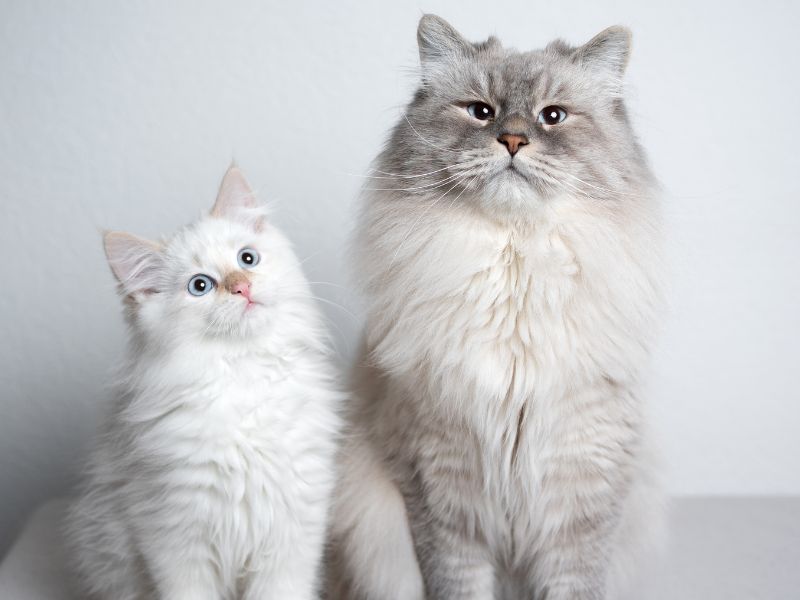
Calculating Cat Years to Human Years: How it Works
Understanding how to calculate cat years to human years involves recognizing that cats age differently from humans. Our Cat Age to Human Age Calculator uses a simple, science-backed formula to convert your cat’s age into an equivalent human age.
Here’s how it works:
Cats Age Faster in Their Early Years
During the first two years of life, a cat's growth and development are rapid—far more so than a human's.
- Year 1: A cat is equivalent to a 15-year-old human teenager by the end of their first year.
- Year 2: By the second year, a cat reaches the human equivalent of 24 years old.
This accounts for their accelerated physical and behavioral maturity.
Start Calculator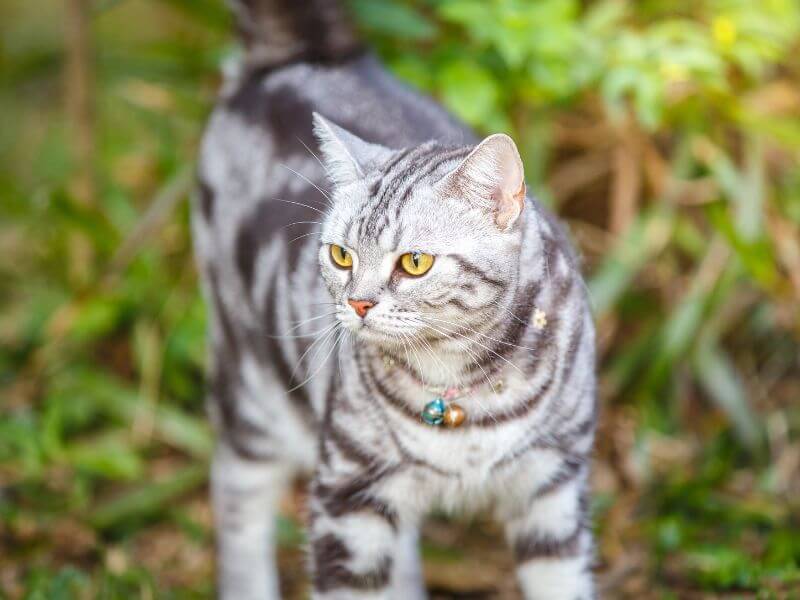
Gradual Aging After Year Two
After their second birthday, cats age more slowly, with each additional year roughly equal to 4 human years. This steady progression reflects the slower pace of aging during adulthood compared to their formative years.
For example:
- A 3-year-old cat is about 28 human years old.
- A 10-year-old cat is approximately 56 human years old.
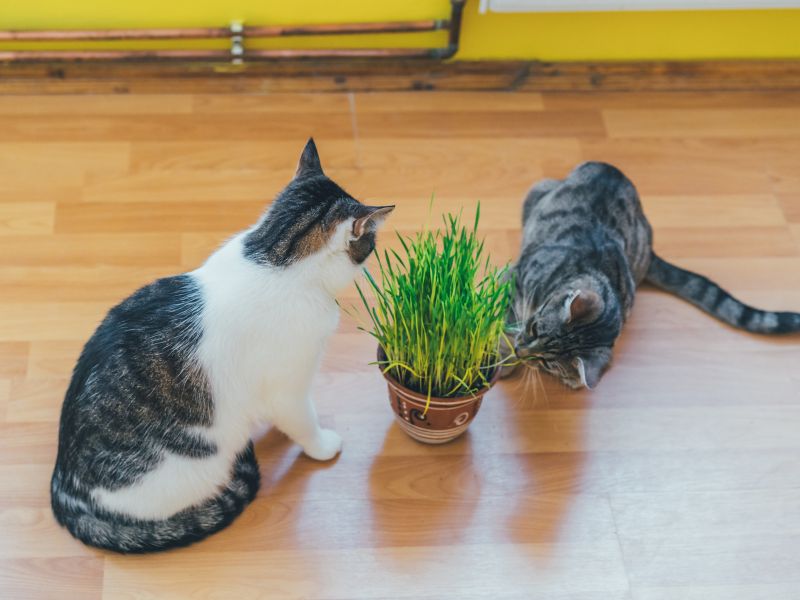
Factors That Impact the Calculator
While the formula is a general guideline, the calculator also considers factors like:
- Lifestyle (Indoor vs. Outdoor): Indoor cats often live longer, which can influence how their "human age" is perceived.
- Breed: Certain breeds have different life expectancies, slightly affecting their human-age equivalents.
- Health and Care: Regular vet visits, diet, and exercise may slow aging and increase the "human age" equivalent of a healthy cat.
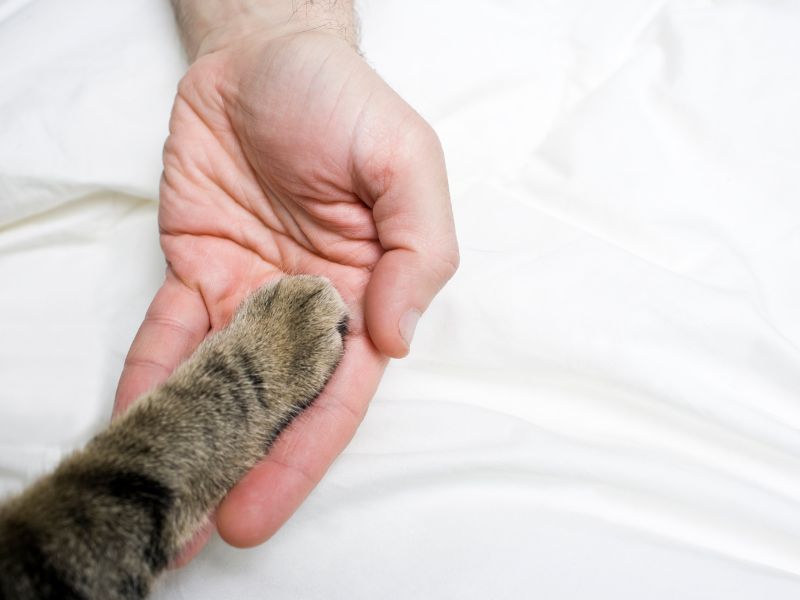
How to Use the Calculator
1. Input your cat's age in years or months.
2. The calculator applies the formula:
- The first year = 15 human years.
- The second year = 9 human years.
- Each additional year = 4 human years.
3. View your cat’s age in human years.
For example, if your cat is 5 years old, the calculator will show they are about 36 human years old.
Cat Age Chart: Cat Years to Human Years
This chart highlights just how quickly cats grow and mature. A simple yet powerful tool for better understanding your cat’s aging process and catering to its needs as it transitions through life.
| Cat Age | Human Age | Cat Age | Human Age |
|---|---|---|---|
| 1 year | 15 years | 11 years | 60 years |
| 2 years | 24 years | 12 years | 64 years |
| 3 years | 28 years | 13 years | 68 years |
| 4 years | 32 years | 14 years | 72 years |
| 5 years | 36 years | 15 years | 76 years |
| 6 years | 40 years | 16 years | 80 years |
| 7 years | 44 years | 17 years | 84 years |
| 8 years | 48 years | 18 years | 88 years |
| 9 years | 52 years | 19 years | 92 years |
| 10 years | 56 years | 20 years | 96 years |
But how accurate are these estimations? While this chart offers a general guideline, there are other factors that can influence how a cat ages.
In the next section, we’ll explore how veterinarians estimate a cat's age and what signs to look for as your feline companion grows older.
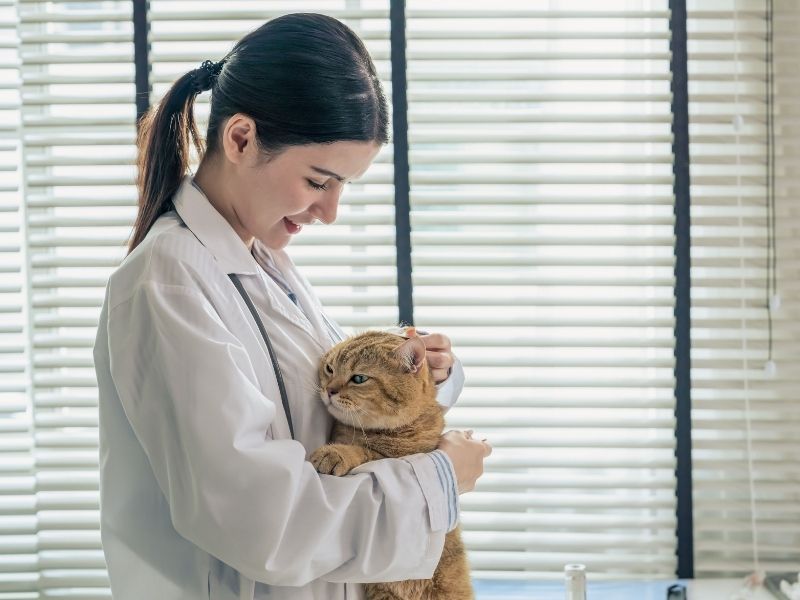
How Accurate is Cat Age Estimation?
Estimating a cat’s age, especially if you’ve adopted them as an adult, can be tricky. While this chart and calculator offer a solid guideline, veterinarians often look at other factors, such as:
- Teeth: Cats’ teeth reveal a lot about their age. Young cats have sharp, clean teeth, while older cats show wear or tartar buildup.
- Eyes: Cloudiness or iris changes can indicate aging in senior cats.
- Behavior: Kittens are playful, while older cats tend to be calmer.
The closer you monitor your cat’s health and behavior, the better you’ll understand their needs as they age.
Understanding your cat’s life stage is just as important as estimating their age. Life stages provide a roadmap for what to expect as your feline friend grows and matures, helping you offer the best care at every step.
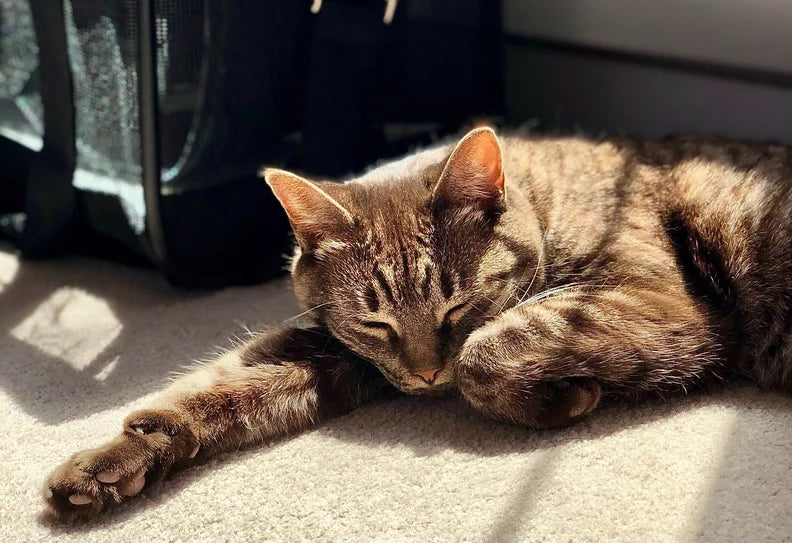
Cat Life Stages: The Journey from Kitten to Super Senior
Ever wondered where your cat fits in the journey of life? Just like humans, cats go through distinct life stages, each with its own milestones, behaviors, and care needs.
From energetic kittens to wise super seniors, here’s a breakdown of the key stages your feline friend experiences:
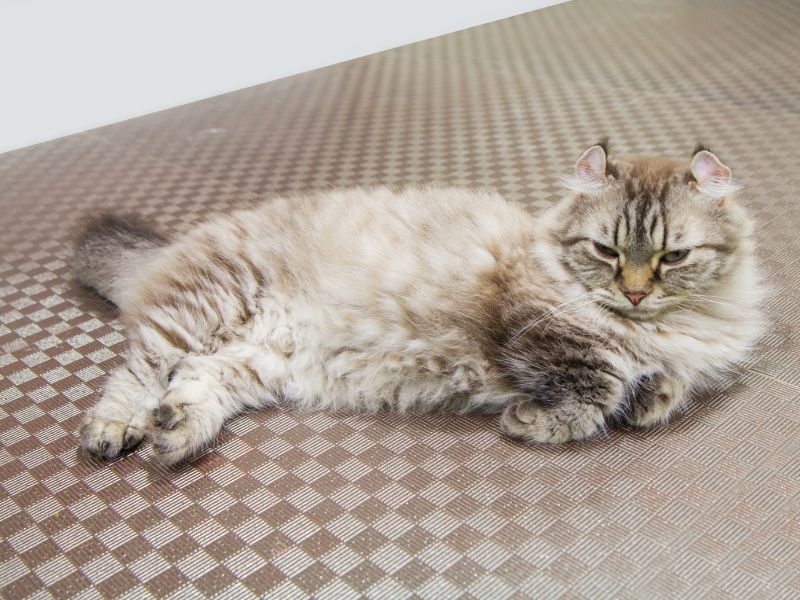
How Long Do Cats Live? The Average Feline Lifespan
Cats live an average of 12–15 years, but calculating a cat's life expectancy depends on several key factors, including their lifestyle, breed, genetics, and overall health.
While there's no one-size-fits-all formula, here are some steps and considerations to estimate how long your cat will live:
Consider Lifestyle (Indoor vs. Outdoor)
- Indoor Cats: Typically live 12–20 years or more due to a controlled, safe environment with fewer risks like predators, accidents, or diseases.
- Outdoor Cats: Often live 5–10 years due to exposure to hazards like traffic, fights with other animals, and infectious diseases.
Did you know? The oldest recorded cat, Creme Puff, lived to be 38 years old!
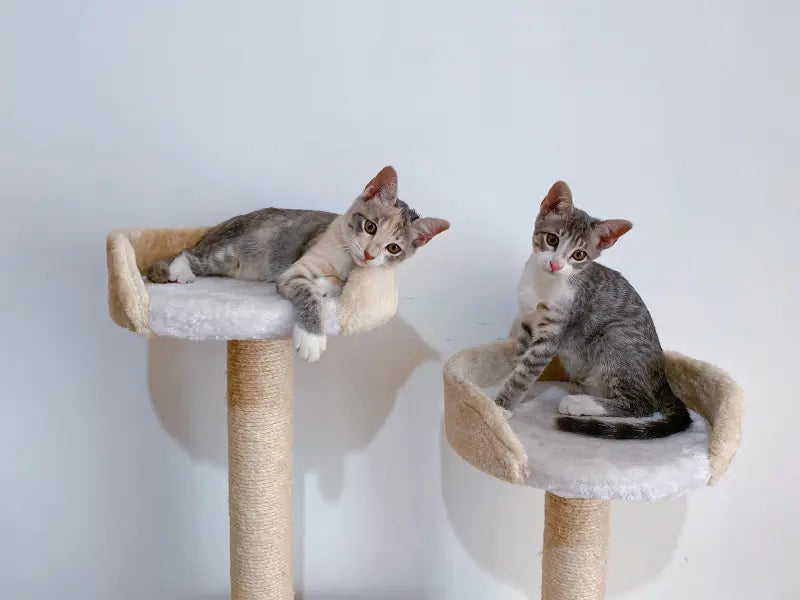
Factor in Genetics
A cat’s family history and breed can play a significant role. Cats from healthy bloodlines with no major hereditary diseases generally live longer.
Evaluate Diet and Nutrition
Cats with a well-balanced, species-appropriate diet are likely to live longer. Proper nutrition supports healthy weight, organ function, and immunity, all of which impact longevity.
Monitor Preventative Care
- Regular vet check-ups, vaccinations, and dental care can prevent diseases and catch health issues early.
- Spaying or neutering can increase lifespan by reducing the risks of certain cancers and roaming-related injuries.
Account for Senior Years
Senior cats (11+ years) require extra care as they are more prone to chronic conditions like kidney disease, arthritis, or diabetes. Addressing these early can extend their life expectancy. Try our Ask a Vet Free tool to learn more about nutritional tips for your senior cats.
Cat Lifespan by Breed: Shortest, Regular, and Longest-Lived Cats
Not all types of cats age the same way—breed plays a significant role in their lifespan. While some breeds are prone to shorter lives due to health challenges, others are known for their impressive longevity. Here’s a breakdown of the shortest, average, and longest-lived cat breeds:
Cat Breeds with Shortest Lifespans (8–12 years)
These breeds often face genetic predispositions to health issues, leading to shorter lifespans:
- Manx: 8–14 years: Known for their taillessness, Manx cats are prone to spinal defects that can shorten their lifespan.
- Bengal: 10–14 years: While generally healthy, Bengals can develop heart disease (HCM), which impacts their longevity.
- Abyssinian: 9–15 years: This active breed is predisposed to dental issues and kidney disease, which can affect their lifespan.
Cat Breeds with Regular Lifespans (12–15 years)
Most domestic cats fall into this category, living an average of 12–15 years:
- Domestic Shorthair and Longhair (Mixed Breeds): 12–16 years: Mixed breeds often benefit from genetic diversity, making them less prone to hereditary diseases.
- Persian: 12–15 years: This luxurious breed is prone to breathing and eye issues due to their flat faces.
- Ragdoll: 12–15 years: Gentle giants, Ragdolls, are relatively healthy but can face heart disease (HCM).
Cat Breeds with Longest Lifespans (15+ years)
Some cat breeds are known for their impressive longevity, often living well into their late teens or even 20s:
- Siamese: 15–20 years: Thanks to their robust health and slender build, siamese cats are one of the primary breeds known for longevity.
- Burmese: 18–25 years: Burmese cats are famous for their affectionate nature and long lifespans, sometimes reaching their mid-20s.
- Savannah: 17–20 years: This hybrid breed is hardy and athletic, often living longer than average.
- Russian Blue: 15–20 years: Russian Blues are a healthy and long-lived breed known for their sleek appearance.
Conclusion: Understanding Cat Years to Human Years
Understanding the relationship between cat years and human years offers valuable insights into your feline friend's life stages, helping you tailor their care as they grow. Each phase of your cat's journey is unique, from the rapid development of their kitten years to the wisdom of their senior years.
Using tools like a cat age calculator and lifespan charts, combined with an awareness of breed-specific traits and proper care, ensures your cat lives a long, happy, and healthy life.
Whether estimating your cat's age or exploring their life stages, this guide equips you with everything you need to be the best pet parent.
Frequently Asked Questions
Do Male or Female Cats Live Longer?
Do Male or Female Cats Live Longer?
On average, female cats tend to live slightly longer than male cats, but the difference is minimal. Factors like spaying/neutering, diet, healthcare, and environment play a far greater role in determining a cat's lifespan than gender alone. Providing proper care and a safe lifestyle can help any male or female cat live a long and healthy life.
What Happens When a Cat's Body Starts to Shut Down?
What Happens When a Cat's Body Starts to Shut Down?
When a cat's body begins to shut down, they may show signs like loss of appetite, extreme lethargy, and reduced mobility. Breathing may become irregular, and they might seek solitude or show less interest in interaction. Other symptoms can include changes in body temperature, incontinence, or disorientation. It's important to provide comfort and consult a veterinarian to ensure your cat's remaining time is as peaceful and pain-free as possible.

